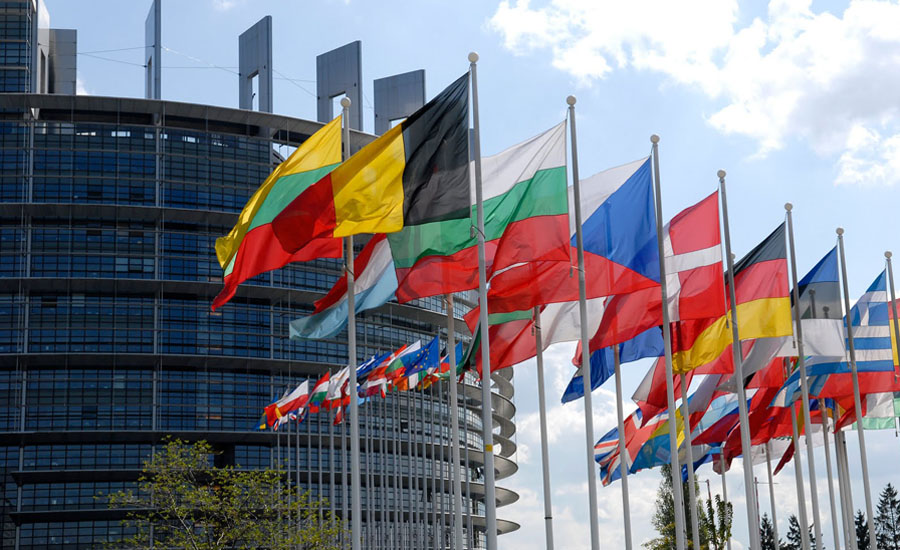Cancer is the leading cause of work-related mortalities in the European Union (EU) and is responsible for 100,000 unnecessary deaths a year. Yet most research and policy on its causes and prevention still assume that it is mainly men who are affected, even though an increasing proportion of the victims are now women. The need to shift research priorities and better address workplace prevention to reflect changing occupational risks was the subject of an ETUI conference in Brussels in early December.
Tony Musu, senior research at the ETUI, said that workplace cancer was often ‘invisible,’ and workplace cancer among women was particularly invisible. Tackling the problem required concerted action, as over 80% of exposure at work is caused by 50 different carcinogenic agents. He pointed to the enormous cost of inaction, with research presented in a new book from the ETUI estimating that work-related cancers costs between €270 and €610 billion a year in the EU-28.
More and better research
To help better direct research efforts, a key aim of the conference was to explore variations in the incidences of workplace cancer by gender and socio-economic status. Marian Schaapman, Head of the ETUI’s Health and Safety research unit, explained the reason for the misconception about gender risks. Men tend to dominate in occupations like construction and manufacturing where the work they do often entails exposure to carcinogenic chemicals, she said, and these sectors had been the focus of much research. But shifting labour market patterns mean the service sector where most people, and most women, work is also a source of cancer risk.
“Researchers are preoccupied with industry and its use of primary substances. But outside these industries, where a lot of women work, it’s a blind spot”, she said. The point was put even more bluntly by ETUI Senior Researcher, Laurent Vogel: “If you’re a man with lung cancer your doctor will probably ask you where you work, but they’re unlikely to do this if you’re a woman with breast cancer. The consequent lack of information could be critical.”
Numerous broad-based studies show that the risk of cancer rises sharply with particular jobs. Occupations involving working with chemicals, such as construction, factory, cleaning and sewage work are, not surprisingly, especially hazardous to workers’ health. However, factors to do with the nature of the work itself are also important. Shift and overnight work also pose a clear risk to health, delegates were told, and it is often women whose jobs have these patterns.
The better the dataset, the clearer the evidence of the link between gender and working conditions, on the one hand, and the risk of getting cancer on the other. Nordic survey data analysed over several decades by Eero Pukkala of the Finnish Cancer Registry showed clear correlations between job types and incidences of cancer. For example, cancer among restaurant workers is much more common than in the general population, with especially high numbers of lung cancer cases indicating clearly that passive smoking was the clear culprit. Sawmill workers had much higher rates of the very rare cancer, nasal adenocarcinoma, acquired by workers breathing in sawdust. Overall, Pukkala estimated that 5% of cancers in men and women are directly related to the work they do. Moreover, 35% of cancer in men and 16% in women are attributed to the socio-economic position of the victim, with people on low wages unable to afford a healthy lifestyle. In the ensuing debate, it emerged that a significant proportion of lifestyle factors are correlated to employment and working conditions.
An emerging methodological approach is also to compare risk factors with a worker’s own biology to see how the two interact to determine vulnerability to cancer and other diseases, said Henri Bastos of ANSES in France in a presentation focused on occupational exposures and breast cancer. There is rarely one single cause of cancer, but particular combinations of factors can be significant. A woman working irregular night shifts in a radiological ward would face an abnormally high level of exposure, for example, but a history teacher of either sex far less.
Reminding delegates of the human stories behind the data, the conference also heard personal testimonies from sufferers and activists. These included Georgina Angusto, a former nurse from Spain, whose story is featured in the latest issue of HesaMag, and Josette Roudaire, who recounted her experiences battling the French company Amisol for compensation for illness she picked up due to dangerous working practices there.
More work to do for scientists and social partners
Although workplace cancers are entirely preventable, policymakers are only slowly waking up to the need for action, delegates heard. EU and national legislation are already in place to tackle work-related cancers, but they need to be continuously improved. Moreover, there is no agreed methodology to derive OELs for carcinogens at EU level.
In a call to arms, Esther Lynch, ETUC Confederal Secretary, urged delegates to “lobby their MEPs to make sure action is taken so no one has to die unnecessarily from work-related cancers.’ Claude Rolin, an MEP, added that prevention is much better than cure and so it is important to deal with the disease before it becomes established by making workplaces safe. This means that social partners are as important as scientists, he said. Other speakers mentioned the recent joint declaration between trade unions and employers’ organisations of the chemical sector in order to apply the same prevention rules for carcinogens, mutagens and reprotoxicants.
Stefan Olsson of the European Commission applauded the important role of the ETUI in highlighting the issue of workplace cancer but called for patience by affirming that the Commission’s strategy was to continuously update the Carcinogens and Mutogens Directive. The Directive has been relaunched and is now on its third revision, but further work needed to get through inevitable bottlenecks in the policy process. Olsson was optimistic that the next Commission would push ahead with a fourth revision next year. But he warned that there will be no shortcuts in the new Commission and, “whatever option we take, we need to ask what the real impact on the worker on the ground is?”
Ian Lindsley of the European Biosafety Network told delegates that more than 12 million workers in the health sector were exposed do hazardous drugs. Most of them are women. He said he thought attitudes were changing for the better. “We are now getting to the point where the Commission is not talking about why things can’t be done, but about how they can be done”, he said. Echoing this, Marian Schaapman said that there were encouraging signs that employers, scientists and other NGOs were increasingly willing to cooperate with trade unions in pushing for action. The goal of safe workplaces was still a long way off, she said, but people were at last starting to listen.
Marita Ulksvog, MEP, introduced a more critical view of the way EU institutions are dealing with the legislation on work related cancer. She recounted that she had to spend entire nights of tough negotiation with the Commission and the Council of Ministers before convincing them to introduce reprotoxic substances in the scope of application of the directive on carcinogens and mutagens. She called on delegates to go on in their fight, combining anger with science.
Source: European Trade Union Institute



